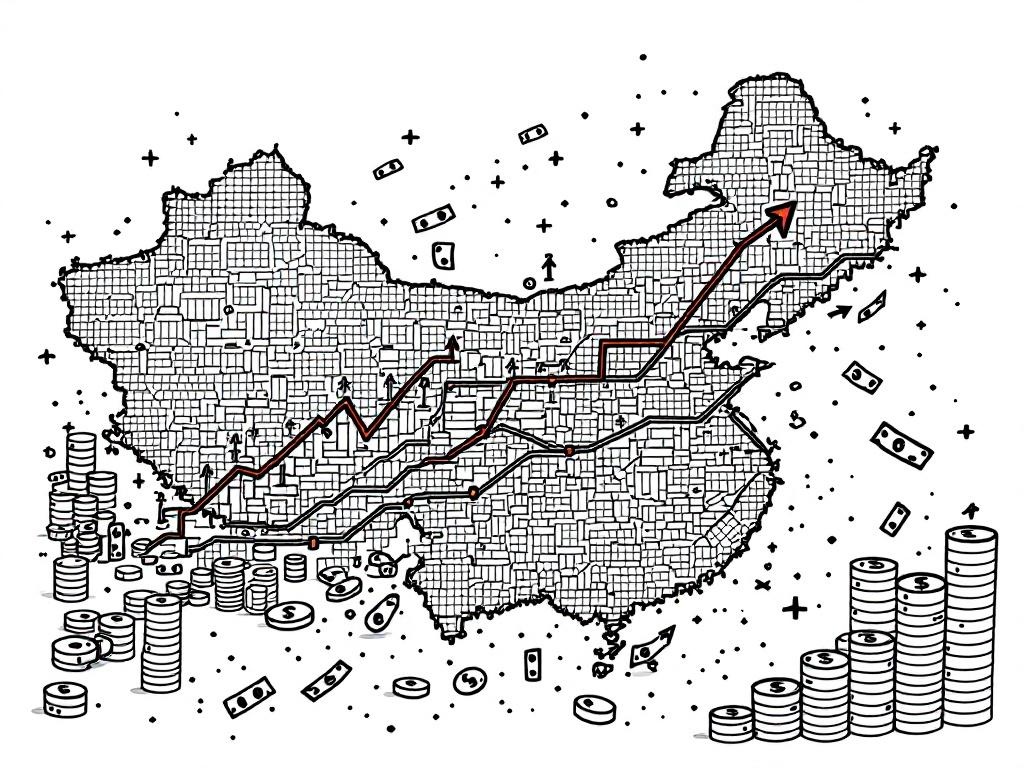China's Export Surge Amid Fragile U.S. Trade Truce

Beijing, Monday, 14 July 2025.
In June 2025, China reported a 5.8% export growth and a record $586 billion trade surplus, driven by a stabilized truce with the U.S. as exporters rushed orders before potential tariff hikes.
Impact of the Trade Truce
The significant rebound in China’s exports underscores the pivotal role that the trade truce with the United States plays in influencing global trade dynamics. Following a tentative agreement aimed at easing severe tariffs, China witnessed a surge in its export activities. Notably, Chinese exporters were eager to fulfill orders ahead of any potential reimplementation of tariffs, reflecting a concerted effort to stabilize economic relationships with one of its largest trading partners [1][2]. The Chinese General Administration of Customs data confirmed a 32.4% month-on-month growth in exports to the United States during June 2025, illustrating the direct impact of reduced tariffs [2].
Sectoral Growth amid Tariff Climates
Beyond the general export surge, certain sectors displayed remarkable resilience. Exports related to electric vehicles and rare earth materials experienced significant growth, driven in part by increasing demand from non-U.S. markets such as Europe and Southeast Asia. Particularly, the export of rare earth materials rose by an impressive 60.3% in June 2025, illustrating China’s strategic diversification efforts amidst ongoing trade tensions with the United States [3][4]. Meanwhile, semiconductor exports also exhibited robust growth, benefiting from shifting focus toward ASEAN and the EU as alternative markets [6].
Economic Implications and Future Prospects
The stabilization in export growth serves as a counterbalance to weakening domestic demand, as highlighted by economists who predict that strong exports will support China’s GDP growth around a target of 5% for the second quarter of 2025 [5][4]. However, uncertainties loom with an impending deadline on August 12, 2025, for a permanent trade deal. This deadline represents a potential turning point, as failure to reach a comprehensive agreement could revitalize previous tariff levels and introduce new trade barriers [6]. Analysts remain cautiously optimistic about continued export growth, though they warn of potential constraints should tariffs persist or increase [5][4].
Challenges and Strategic Outlook
While the short-term benefits of the trade truce are evident, long-term challenges persist. Analysts have warned that enduring high tariffs might constrain Chinese manufacturers’ ability to compete globally by lowering prices [6]. Nevertheless, China is strategically capitalizing on market diversification, particularly in high-tech and environmentally friendly sectors, to mitigate the adverse effects of tariffs. Exporters are increasingly targeting ASEAN and European markets to expand their reach beyond the traditional U.S. consumer base [1][3][6]. Moving forward, China’s economic strategy will likely involve balancing trade negotiations while enhancing its market positions in critical industry sectors.